Engadget has been testing and reviewing consumer tech since 2004. Our stories may include affiliate links; if you buy something through a link, we may earn a commission. Read more about how we evaluate products.
The best gifts for the PC gamer in your life
Everything you need to know before buying (and gifting) peripherals.
We’re in a PC gaming renaissance. Cheap parts and an abundance of home workers have led many to upgrade or build a fresh rig this year, while this fall’s new graphics cards have ensured that the most affluent gamers can still assert their technical superiority over PlayStation and Xbox players. When it comes to gift buying, though, things get tricky. PC gaming is all about choice, and that means you’ll find hundreds, if not thousands, of options in every category, all claiming to be the thing you’re looking for. We’re here to help you cut through the noise and find the perfect gift for the PC gamer in your life. (Or at least give you the knowledge to find it.)
Gaming keyboard
Keyboards are a difficult thing to get right: A lot of what makes a great keyboard comes down to individual taste, so you need to work out what your giftee likes. The first thing to consider is what are their priorities. Are you encouraging your loved one to go pro at Valorant, or do they just want something better than the junk that came free with their tower? How much are you willing to spend, and what features will they appreciate? Spending $60 might get you a keyboard with an abundance of RGB lighting, but those design flourishes will likely mean compromises when it comes to performance.
Switches
There are two main categories of keyboard you’ll be thinking about: mechanical and membrane. Mechanical keyboards have individual switches, usually comprised of a spring and a lever mechanism for each key. Membrane keyboards use conductive traces to detect individual keypresses and typically utilize rubber domes to approximate the spring and resistance of switches. Good ones feel pretty nice to type on, but those used to typing on a mechanical keyboard won’t be fooled.
If you know nothing less than a mechanical keyboard will do, congratulations: Your job is still nowhere near complete. There are dozens if not hundreds of different switches available nowadays, and manufacturers will often give you the choice of at least three when you’re ordering a keyboard.
Mechanical switches can be subdivided into three categories: linear, tactile and clicky. Linear switches are, as the name suggests, the simplest type: Push down on a key, and it goes down, reach the actuation point and the keypress is registered. They’re smooth, consistent and, as the “linear” suggests, require the same amount of force throughout each strike. They’re preferred by those playing FPSes and other games that require precise movements and are generally the quietest switches around — but there is a learning curve if you’re coming from basically any other type of keyboard.
Cherry’s MX Red is the most well-known linear switch; MX Speed/Silver is the same as Red, but with a shorter travel; and MX Black keeps the same travel as Red, but requires more force to push down. Even if the keyboard you’re buying doesn’t have MX switches, chances are the switch manufacturer will either just call them linear or follow Cherry’s naming scheme, although you may see some references to linear switches as “yellow.”
Tactile switches are quite different: Press a key, and halfway down you’ll feel some resistance followed by a distinct bump that provides feedback to let you know that the keypress has been registered. Once you feel the bump you can stop pushing the key and move onto the next. These switches are typically more forgiving to newcomers than linear ones, but by design aren’t as smooth or consistent as linear switches. In Cherry parlance, tactile switches are known as MX Brown, MX Clear and MX Grey, while some manufacturers use “green.”
Ever been irritated by the sound of an inconceivably loud keyboard? You’ve probably heard a clicky switch. They feel similar to tactile switches, but each keypress emits a click to let you know you’re typing. If you’re buying for a roommate, partner or child and you’re regularly going to be in close proximity to their keyboard, you might want to look elsewhere. But many love the audible feedback, especially when typing, rather than playing games — in fact, this article was written on a clicky keyboard. Cherry’s MX Blue are the best-known clicky switches, but many manufacturers use White or Green.
If you’re feeling overwhelmed right now, or have no idea how to proceed, do some detective work to see what your giftee currently uses or might like. Generally, if they’re coming from a laptop or a membrane keyboard they’ll probably find tactile switches easiest to adjust to, but if you know they want to become an esports star a linear switch will probably be worth the initial struggle to adjust.
Design and extras
Once you’re decided on switches, the only things left are layout and extras. A full-sized keyboard can be large, so tenkeyless designs omit the numpad, while smaller keyboards may strip out the function row or even the arrow keys. If you know your giftee has a small desk, a tenkeyless design might be in order. Otherwise, a full-sized keyboard is probably the safest bet. As for extras, these mostly come down to whether there are additional keys added and how complex the backlighting is.
Media controls are definitely nice to have, as they’ll let someone switch up their music without tabbing away from their game. Macro keys can also be useful, depending on the types of games the recipient plays; someone into World of Warcraft will likely get far more use from macros than a Minecraft player, for example.
All of which brings us to design. A lot of the keyboards you’ll find definitely have that gamer aesthetic, which is a taste your loved one may or may not have acquired. The thing is, so long as the backlighting is customizable, the fact that a keyboard is capable of shooting rainbows across its face every time you press a key doesn’t mean it has to. A high-quality RGB setup could just as easily be utilized to ensure static and consistent backlighting or to only illuminate the keys you use in a certain game.
The best gaming keyboards
With the above advice and some thorough Googling of reviews, you should be able to find the best keyboard to gift. If you’re in a rush or are just looking for a place to start, here are three picks for various price points:
Best RGB entry-level keyboard: Razer Cynosa v2

The Cynosa v2 is one of the best membrane keyboards around. It features a standard layout with additional media controls above the numpad, and some additional key features hidden behind a function key. The keys, as expected from a membrane, will feel a little spongy, but are responsive and definitely a step-up from pack-in keyboards or those in most laptops. As you’d expect from a company like Razer, there’s an awful lot of RGB here, with each key individually lit and fully addressable. Razer’s Synapse software is good for customizing everything from macros, and also includes some fancy RGB presets if your loved one is rainbow inclined.
This keyboard is definitely more flashy than functional, but its low price and solid performance make it perfect for a child, teen or more casual player. If this is in your budget range but you’re after something a little more subdued, you could try Logitech's G213.
Buy Cynosa v2 at Amazon - $60 Buy Cynosa v2 at Best Buy - $60
Best gaming keyboard for most people: Corsair K70 Mk2

The K70 has long been a safe choice for a mechanical gaming keyboard. It has a standard layout, with added media keys (including a nice volume roller) and a button dedicated to locking the Windows key. There’s a wide range of switch options, all provided by Cherry, covering linear, tactile and clicky. The K70 also comes with some swappable keycaps for FPSes and MOBAs that are contoured and textured to give players more grip on the most important keys. Corsair’s software works well for customizing functions and RGB, and the K70 improves on cheaper keyboards with built-in memory. That means you can set up three profiles for various games you play, and they’ll be there no matter what PC or laptop you’re plugged into.
Perhaps the only potential negative with the K70 is its design. It’s well-built but compared to more neutral offerings from Logitech and Razer the font choice for the keycaps is extremely gamer. If that’s a dealbreaker, you might want to consider something like the Logitech G610 instead. It’s a little more barebones than the K70, but it is perpetually on sale and can be found for under $100.
Buy Corsair K7 Mk2 at Amazon - $154 Buy Corsair K7 Mk2 at Walmart - $152
Best high-end wireless gaming keyboard: Logitech G915 Lightspeed
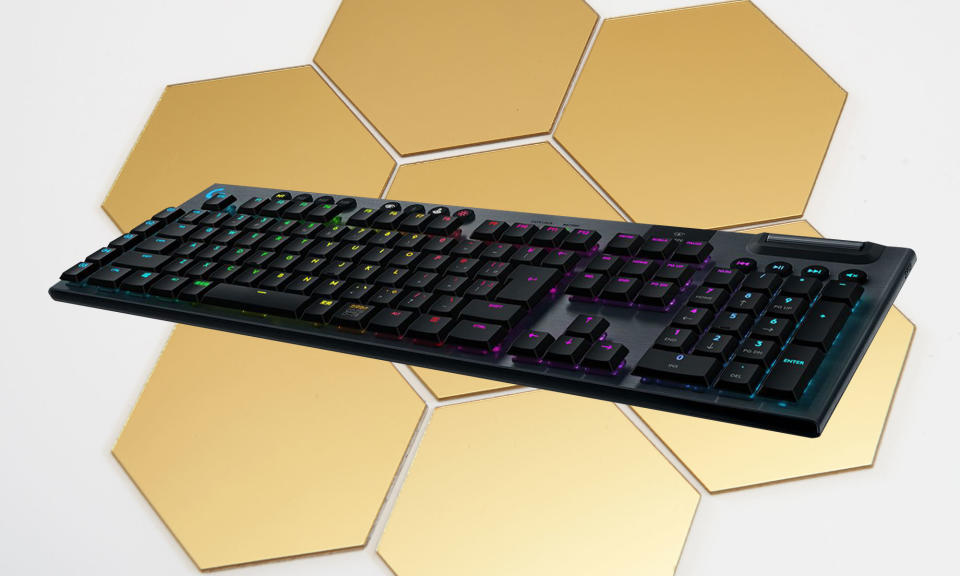
The G915 is a lot of keyboard for a lot of money. It’s a standard layout, with a bunch of additions on top, including media controls and five macro keys. It’s also wireless, with a quoted 1ms latency, and a dedicated button to switch between paired machines, which is useful for someone that uses a secondary PC to stream with (you can also use it wired). While there are no swappable keycaps like the K70, there are hotkeys for swapping between profiles, and Logitech’s software does a great job of making customization simple.
Really, what you’re buying with the G915 is the design: It’s an incredibly thin deck, with keys that seemingly float above it and premium materials abound. Logitech has its own line of solid switches, but while the linear and tactile ones are recommended, the clicky ones aren’t quite up to scratch for a product in this price range. At around $250, it’s not a cheap gift, although there is a ten-keyless version of the keyboard for a slightly cheaper $230.
Buy G915 Lightspeed at Amazon - $250 Buy G915 Lightspeed at Best Buy - $250
Gaming mouse
Gaming mice come in many shapes and sizes, and once again what’s perfect for one person may be Kryptonite to another. Thankfully, there aren’t nearly as many variables to consider if you’re looking to gift a mouse rather than a keyboard.
Grip style
One thing worth knowing is how the person you’re buying for holds their mouse: palm, claw or tip. If you’re already confused, no worries, these terms are simple to understand: A palm grip, as the term suggests, has your palm sitting on the rear, while your fingers and thumb envelop the rest of the mouse. A claw grip is similar, but your hand is more arched and your fingers are in a claw shape, only making contact with the mouse at the pads. The “tip” grip is then a more extreme take on the claw, with the palm raised off the mouse and only the tips of your fingers and thumb making contact; this isn’t a very common style at all.
Chances are, the person you’re buying for is a palmer, which is good as they’re “compatible” with the majority of mice. If they’re not, the other grip styles do discount some mouse shapes, but there are still plenty of models to choose from.
Buttons
Every mouse is going to have a primary button, a secondary button and a scroll wheel. When it comes to gaming mice, you’ll struggle to find one that doesn’t have at least two extra programmable buttons on the side. These can be mapped using the manufacturer’s software to activate an ability in a game, push-to-talk or really to anything you can imagine. What you’re really paying for is flexibility.
You may have seen gaming mice with a huge number of side buttons, which are mostly targeted at people that play MOBAs or MMOs. Your giftee might benefit from mapping myriad functions to the side of their mouse, but they also might not. Let’s say the person you’re buying for plays League of Legends every day; if they’re not already using a mouse with dozens of buttons, they’ll have already developed the muscle memory in their keyboard hand for every function you’d map to those extra mouse buttons.
Switches, sensitivity and tracking
Don’t worry, we’re not about to spend five minutes running through various switch colors. You might see a manufacturer talking about mechanical or optical switches, but these are not massively important; any mouse we’re recommending in this article clicks just fine.
CPI (listed as DPI by some companies) is a common spec to see marketed: It means count per inch, and refers to the number of times the mouse can detect movement while being moved one inch. As you’d imagine, a 25,600-CPI mouse is going to be more sensitive than a 12,000-CPI one. However, no one would actually want to use their mouse at that rate; these days it’s easier to view those huge numbers as a vague approximation of sensor quality (or just marketing fluff). Sensors are most accurate towards the lower end of their range, so pro players typically set CPI at something like 800 when gaming to ensure perfect tracking, and then adjust sensitivity in their game of choice’s menu.
What you should be looking for is a mouse that can be fine-tuned, ideally in increments of 100, to match exactly what the user wants. Many mice will also let you store various CPI rates either via software or on the mouse itself, and switch between them with a dedicated button. Even if you don’t have a dedicated button on the mouse, most software allows you to bind CPI switching to a keyboard combination. This is useful since at 800 CPI you’ll struggle to move your mouse across the desktop. My (16,000 CPI) mouse sits at 1,900 when I’m working and has a button underneath that can step that down if I’m playing a game. More expensive mice may let you switch button mapping at the same time, letting you have different setups for different games.
The final mysterious figure to unravel is IPS, which means “inches per second,” and refers to the speed at which you can move your mouse before it stops tracking movement properly. You may also see this referred to as “max speed.” This is not crucial if you’re buying for a Civilization VI lover, but if you’re in a fast-paced FPS trying to land flick shots, you can move your mouse at incredible speeds over very short distances. It’s common nowadays to see high-end mice rated at 400-plus IPS, which is overkill. It’s unlikely even the twitchiest of gamers will surpass 200 IPS, so those higher numbers are really just a mark of quality.
There are other figures you’ll frequently find on spec sheets, such as polling rate and max acceleration or “G.” Any modern gaming mouse from a reputable brand will offer a high polling rate, typical 1000Hz, while the acceleration rating is roughly in step with the IPS number.
Dextrality
This one’s really simple: Are you buying for a left- or right-handed person? It’s rare to find a mouse purpose-built for left-handed people — only one model comes to mind right now — and that unfortunately discounts lefties from using a lot of mice. There are, however, a number of “ambidextrous” mice that work equally well with either hand. As you’d imagine, these are popular with left-handed folks, but they’re also useful if a right-handed person needs to do something else with their dominant hand, like sketching on a graphics tablet.
The best gaming mice
Best palm-grip gaming mouse for most people: Razer Basilisk X HyperSpeed
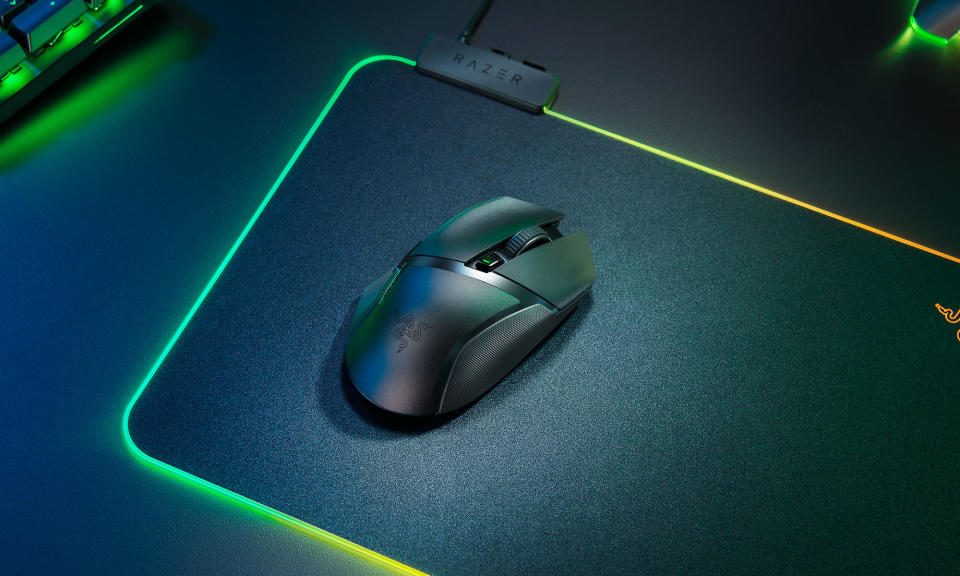
At $60, it’s hard to go wrong with Razer’s long-standing Basilisk line. It’s built for palm grippers, with two left-side buttons and a channel to rest your thumb on when it’s not clicking. The X HyperSpeed variant we’re recommending is wireless, and forgoes flashy RGB lighting in favor of battery life: It claims 285 hours of runtime in its performance wireless mode, or 450 hours over Bluetooth, both from a single AA battery. There’s a button just behind the scroll wheel that lets you switch between the two connection modes to save battery life when you’re not in-game. It’s got a decent heft to it (87g without a battery), and its wheel offers nice feedback when you’re scrolling.
At 16,000 CPI and 450 IPS, Razer’s sensor is more than capable of keeping up with any type of game, and the mouse has onboard storage for up to five CPI rates, meaning you’ll be able to switch to your preferred settings whether you’re at your own computer or somewhere else. As hinted, there are other Basilisk mice to choose from, going all the way up to the $170 Basilisk Ultimate, which has many more programmable buttons, a charging dock and a ridiculous 14 customizable RGB zones.
Buy Basilisk X Hyperspeed at Amazon - $59 Buy Basilisk X Hyperspeed at Walmart - $59
Best gaming mouse under $30: SteelSeries Rival 3
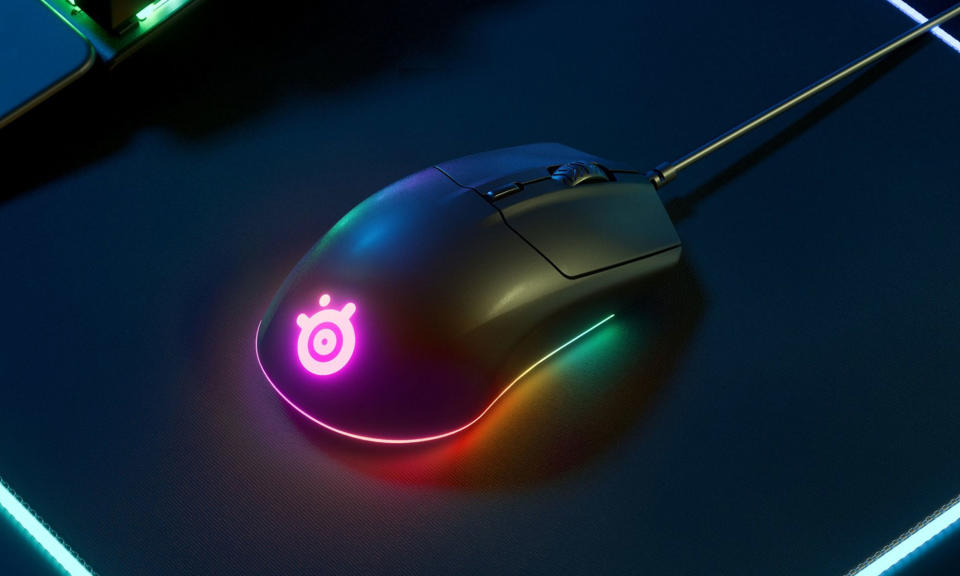
SteelSeries’ Rival 3 offers a fantastic set of features for a very low price. Well-suited for any right-handed grip, it’s a wired mouse that doesn’t throw up the huge numbers of more expensive rivals, but still has everything most people need. At 77g, it’s light without feeling cheap, while its sensor tops out at 8,500 CPI and 300 IPS, which is squarely “good enough.” You’ll find two programmable buttons on its side, and a third just behind the scroll wheel. As a nice extra, the Rival 3 even has some RGB lighting around its base, which can be customized (or disabled) with SteelSeries’ app.
Best ambidextrous gaming mouse under $80: Razer Viper

The Viper is a long-standing staple on many “best gaming mice” lists, chiefly because left-handed people exist, and it’s an unfussy mouse that’s good for left-handed people. It’s a very lightweight (69g) wired mouse that plays it safe on the feature side. You’ll find the same sensor as the Basilisk X Hyperspeed, rated for up to 16,000 CPI and 450 IPS, and onboard storage for five presets (switchable with a button on its underside). There are two programmable buttons situated on either side of the mouse, and the Razer logo can be set to glow in any color you can think of. The weight of the Viper can make it feel a little cheap at first, but it also makes it easy to maneuver.
If you’re looking for a flashier gift, Razer offers lots of variations of the Viper, including a wireless “Ultimate” variant with a charging dock, a 20,000-CPI/650 IPS sensor and an additional programmable button next to the scroll wheel. Oh, and if Razer’s not your loved one’s thing, or this is all sounding a bit rich for you, SteelSeries has a solid entry-level ambidextrous model worth looking at: the Sensei 310. It has two programmable buttons on each side, a 12,000-CPI/350 IPS sensor and a decent amount of weight to it at 92g.
Buy Viper mouse at Amazon - $79 Buy Viper mouse at Walmart - $70
Best high-end wireless gaming mouse: Logitech G Pro Wireless
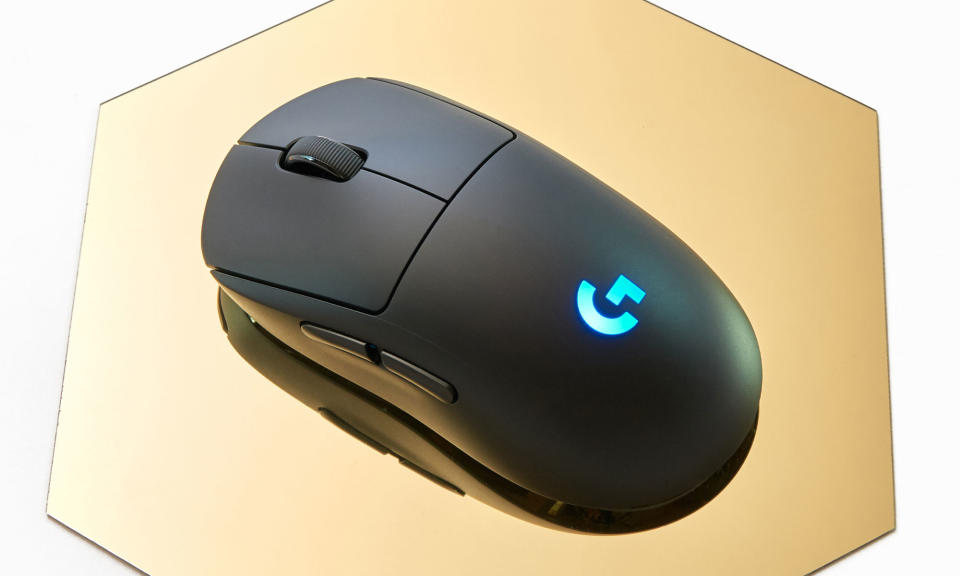
Logitech’s G Pro Wireless is a bit of a sleeper. It has none of the gamer aesthetic of its contemporaries, but it’s true overkill in the spec department. For starters, Logitech’s Lightspeed wireless tech is best-in-class, with great latency and rock-solid performance. The G Pro’s sensor is rated up to 25,600 CPI and over 400 IPS, and like the Basilisk it can store five profiles onboard. It’s extremely lightweight, clocking in at 80g including its built-in battery, and lasts for 60 hours without a charge (or 48 hours if you have its RGB lighting features enabled).
The G Pro works with any grip style, and is entirely ambidextrous, as you can either have two programmable buttons on each side or use the included blanking plates to just have them on the left or right. Logitech’s scroll wheel is very light, but still offers good feedback, and its primary two buttons are, by virtue of some complex engineering we won’t get into here, extremely quick and responsive. At $130 it is not cheap, but it’s also one of the best gaming mice money can buy.
Buy G Pro Wireless at Amazon - $129 Buy G Pro Wireless at Walmart - $129
Controllers
While keyboard-and-mouse is typically the preferred way to play, with so many console games being ported to PC nowadays, a dedicated gamepad is a nice thing to have. Perhaps it shouldn’t be surprising that the only controllers we’re recommending today are made by Microsoft. The company has been making gamepads for decades, and since the Xbox 360 they’ve been up there with the best in the industry.
Support for competing button layouts and input standards (as found on Sony’s DualShock controllers) has improved in recent years, but Microsoft’s button layout and “XInput” API is the standard for most games. While Steam, in particular, does a good job at making DualShock on PC seamless, you’ll find yourself running into problems with mapping or compatibility in certain games — FIFA 20 is a great (or terrible?) example.
The best PC gamepad for most people: Microsoft Xbox Wireless Controller
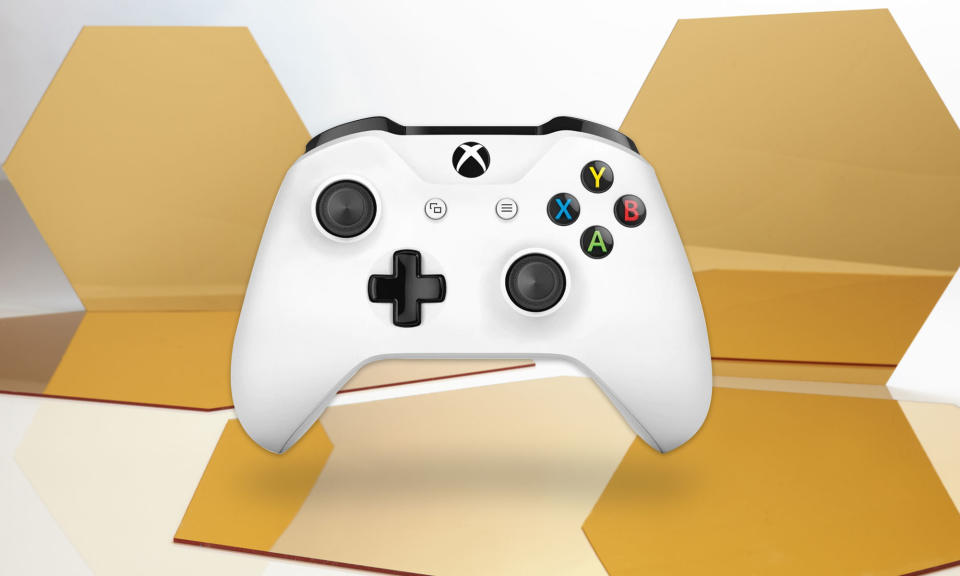
Thanks largely to XInput, the Xbox Wireless Controller is the standard PC controller, and also the best one for most people. It’s currently in the middle of a glow-up, as a new version has debuted with the Xbox Series S and X, but it’s so similar to the old one (only the D-pad is significantly different) that you needn’t worry about which version you’re buying. Both pads support Microsoft’s proprietary wireless tech (which is built into some computers), but also work well with Bluetooth. Battery life over wireless is strong, but given the distance most PC players sit from their screen, chances are they’ll be using their pad over USB anyway.
The only thing you really need to think about is color and price. The older pad is available in dozens of designs, including some limited-edition ones tied to games like Cyberpunk 2077. If you click around a bit on Amazon you can frequently find some great deals on select colors that drop the asking price down from $65 to less than $50.
Buy Xbox Wireless Controller at Amazon - $60 Buy Xbox Wireless Controller at Walmart - $60
The best high-end PC gamepad for most people: Microsoft Xbox Elite Controller 2
The Elite Controller 2 is the Xbox Wireless Controller, to excess. All of the materials used are more premium, more grippy and just nicer to hold. It comes with a choice of D-pads and adjustable-tension analog sticks that can be swapped out at any time, and you can also change the dead zone of the sticks with the included software. Around the back, hair triggers can reduce the amount of time required to take a shot or jump.
Unlike the standard controller, the Elite has a built-in rechargeable battery, which is good for 40 hours of gameplay and charges over USB. Perhaps because of this longevity, it weighs considerably more than most pads and can take some time to get used to.
Let’s be clear, at $180, this is not a sensible purchase. But that also makes it a great gift if you’re really looking to splash out on someone: It’s something most gamers would love to have, but aren’t willing to buy themselves.
Buy Elite Controller 2 at Amazon - $180 Buy Elite Controller 2 at Walmart - $180
Streaming and YouTube gear
You don’t need much to get started on Twitch: A computer, a camera, and you’re there. If you know a gamer who aspires to be the next Twitch or YouTube star, though, there are dozens of small items you could give them to help make their lives easier, or their stream better.
Logitech webcams
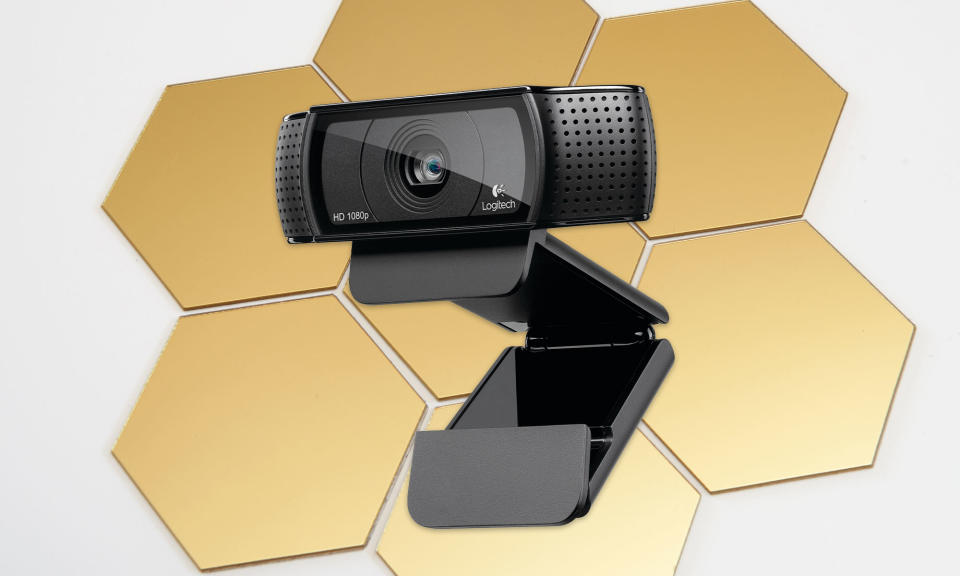
Chances are that anyone interested in streaming has a decent webcam already, but if they’re still using the camera built into their laptop or monitor, Logitech’s entry-level options are a solid step up. They’re the de facto streaming standard, and each has their strengths and weaknesses.
The C920 HD Pro is the best all-rounder, offering a high-quality glass lens and full 1080p capture at 30 frames per second, making it a great webcam for video calls. (The C920 S is the same but with a privacy shade.) The downside is that even at 720p capture will be stuck at 30 frames per second, rendering your output less smooth than the 60fps gameplay typically streamed. The C922 tops out at 720p, but can handle 60fps output, making it a better fit if the only concern is streaming on Twitch. The recent work-from-home boom means all webcams are hard to find right now, but the C920 HD seems to be easiest to find in stock.
Logitech has a number of step-up cameras to choose from, but the best option is the Brio. It has an ultra-wide lens and a 4K sensor, neither of which will sound that useful at first but trust us, both are. What that setup allows streamers to do is choose their field of view (i.e., how zoomed in or out an image is) without physically moving their camera. The Brio can also stream at 1080p60 or 720p90. The big bonus — and the reason we recommend the Brio over, say, the slightly cheaper StreamCam, which can also handle 1080p60 — is Windows Hello support. The Brio has an IR sensor next to its camera that lets it recognize faces, and so the Brio can be used to log into a computer without a password. Hello cameras are fairly common on laptops nowadays, but it’s a luxury that few gaming setups offer.
Buy C920 HD Pro at Logitech - $80 Buy C922 HD Pro at Logitech - $100
Elgato Key Light Air
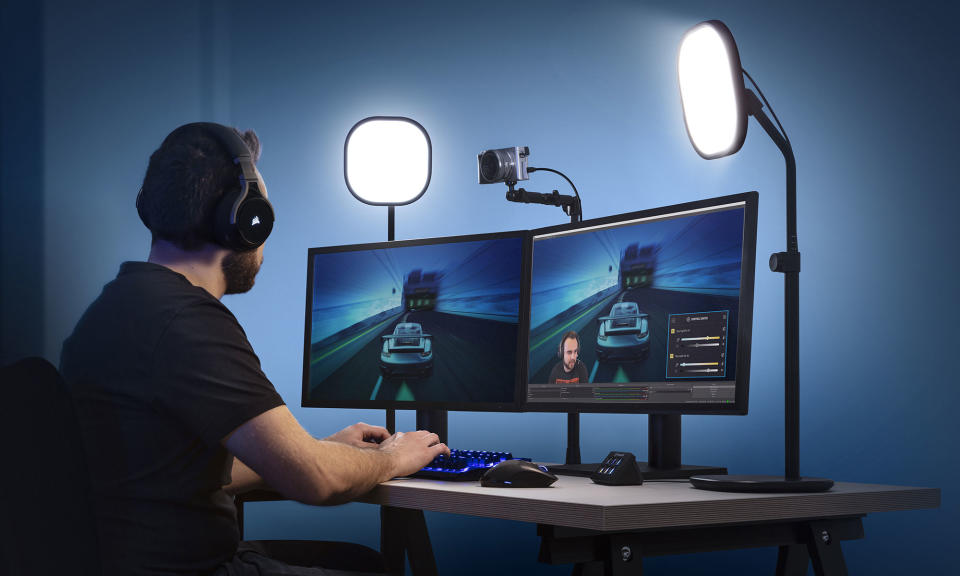
Even if you’ve got the best camera in the world, it won’t be worth much without light. There are many cheaper options than Elgato’s, but the Key Light Air offers some nice comforts in a premium package and is altogether more giftable than an unbranded light in a cardboard box.
We’ve previously recommended the $200 Key Light, and the Air is just its smaller cousin. While the full-sized light clamps to your desk, the Air comes with a small base that sits on your desk (although that can be swapped out for a clamp if you prefer). Both can be adjusted to various angles and take up less space than a box light would. The Air’s rectangular light fitting has 80 powerful LEDs that produce up to 1400 lumens, while the full-sized Key Light doubles the number of LEDs and lumens produced. Both can be tuned to a wide array of brightness levels and color temperatures, ranging from 2900K to 7000K, using an app on a phone or computer.
Buy Elgato Key Light Air at Walmart - $220
Blue Yeti
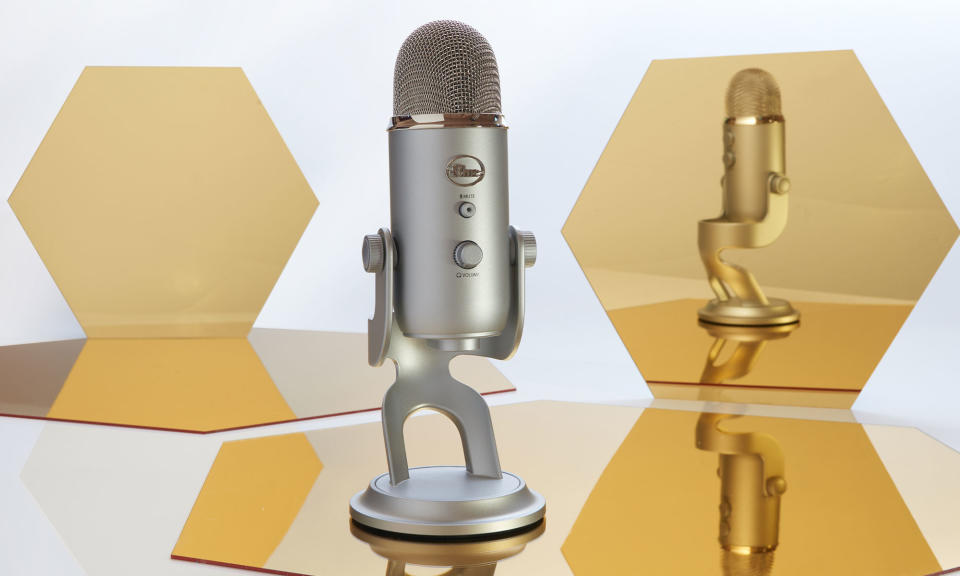
Blue’s Yeti microphone is well-loved by podcasters, streamers and YouTubers alike. It’s a versatile mic with four distinct modes that let you control what direction(s) it records sound from. A streamer would likely use Cardioid Mode, which picks up sound directly in front and mostly suppresses sound from behind and the sides, as it can save viewers from hearing the clacking of a keyboard. The other functions are more useful for recording than streaming: Bidirectional mode is perfect for a one-on-one interview, while the Stereo and Omnidirectional modes are useful when recording musicians or bands.
Buy Blue Yeti at Amazon - $130
Elgato Stream Deck

Finally, the Stream Deck. This little device is like an extension of your keyboard, offering 15 customizable OLED buttons. What someone does with it is entirely up to them. There’s tight integration with OBS, the most popular program for streaming, so, one button could start a stream, another could switch cameras or change the brightness of your lights, while others could be configured to display graphics on your stream, what audio is playing or which of your monitors is being streamed. As each button is a mini OLED display, you can set an icon and/or label to help keep track of what everything does. While there are only 15 buttons, the Stream Deck software allows you to set up folders, so you can technically have hundreds of macros and shortcuts saved. (Personally, my Stream Deck mostly acts as a launchpad for applications, and I have folders set up that replicate keyboard shortcuts in apps I don’t know very well like Adobe Premiere Pro.)
If the $150 Stream Deck falls outside your gift budget, Elgato makes a $100 compact version, the Stream Deck Mini. Although it only has six buttons, like the larger version it technically can house infinite shortcuts. There’s also an enormous 32-key Stream Deck XL priced at $250.
Buy Elgato Stream Deck at Amazon - $148 Buy Elgato Stream Deck at Walmart - $145
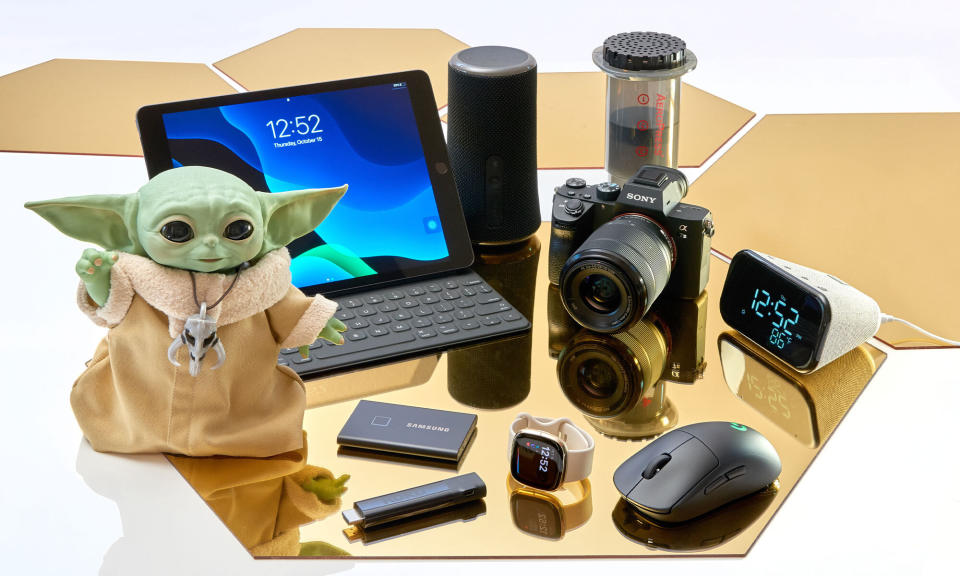
undefinedundefinedundefinedundefinedundefinedundefinedundefinedundefinedundefinedundefinedundefinedundefinedundefinedundefinedundefinedundefinedundefined

 Yahoo Finance
Yahoo Finance 